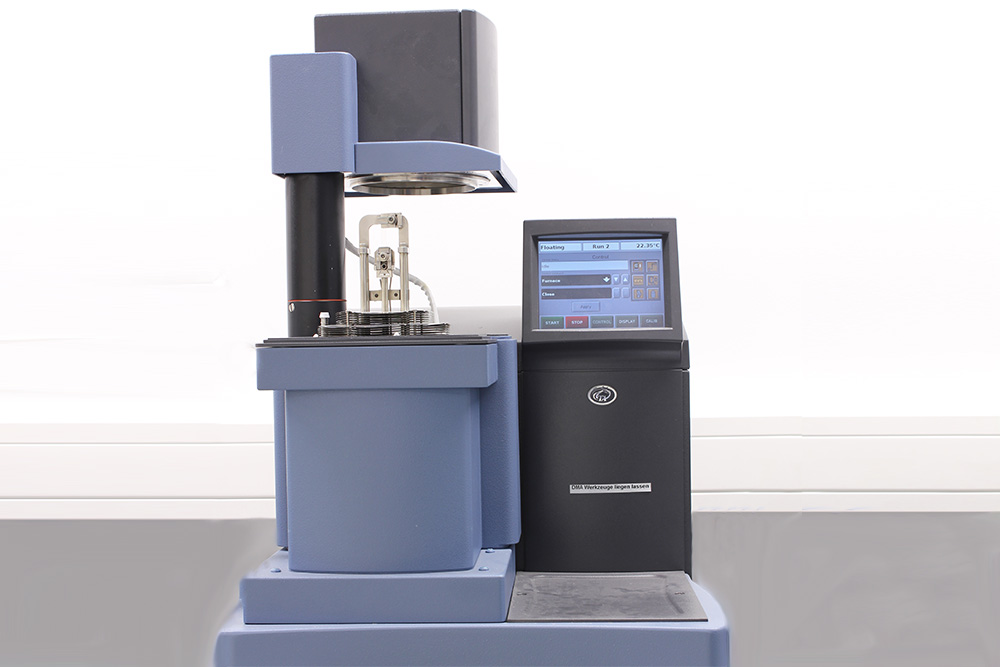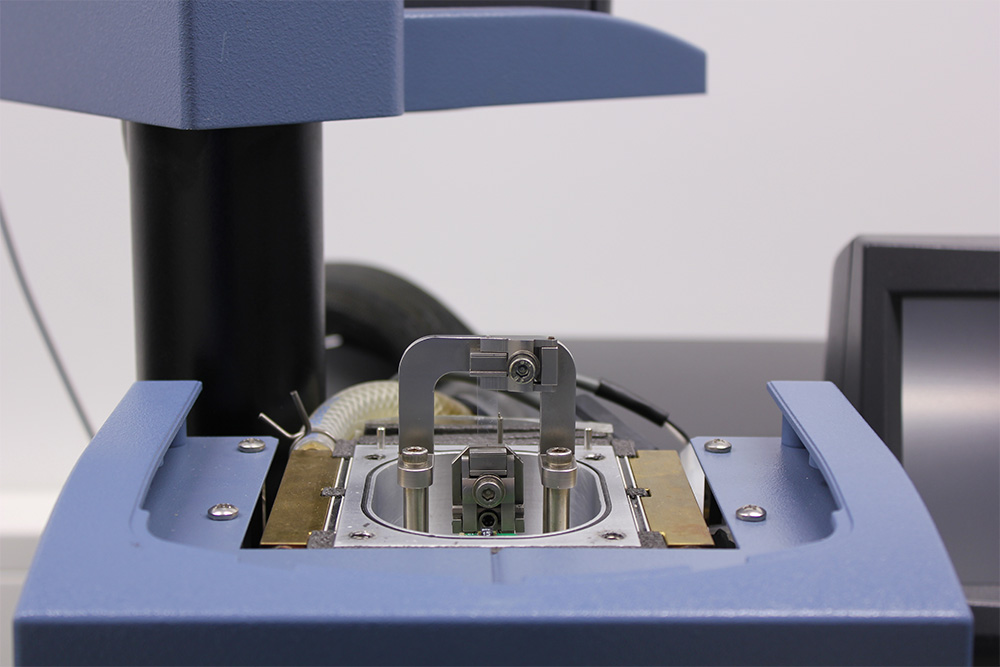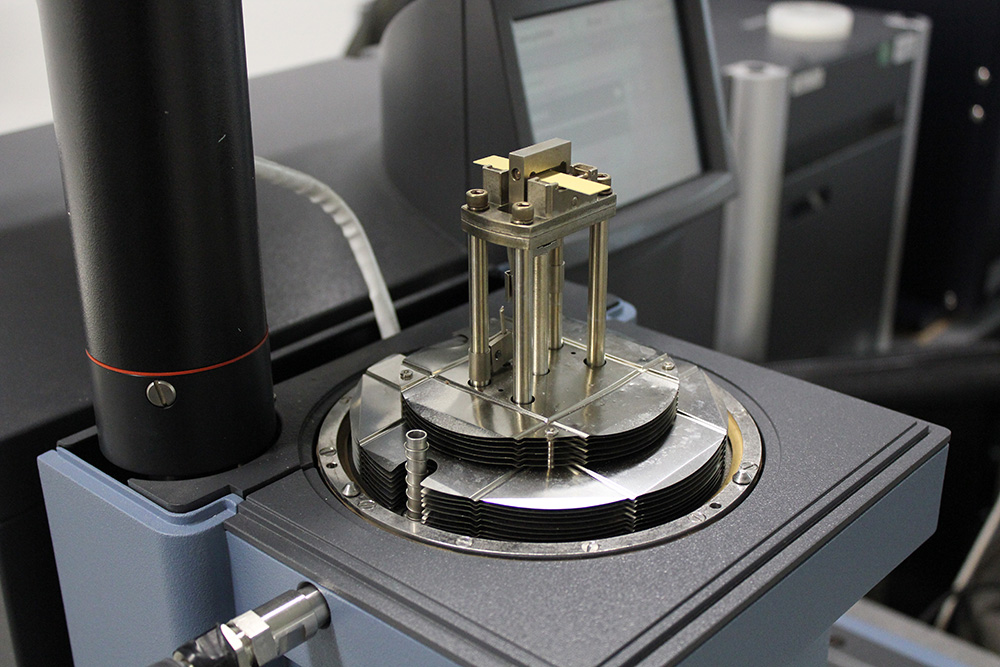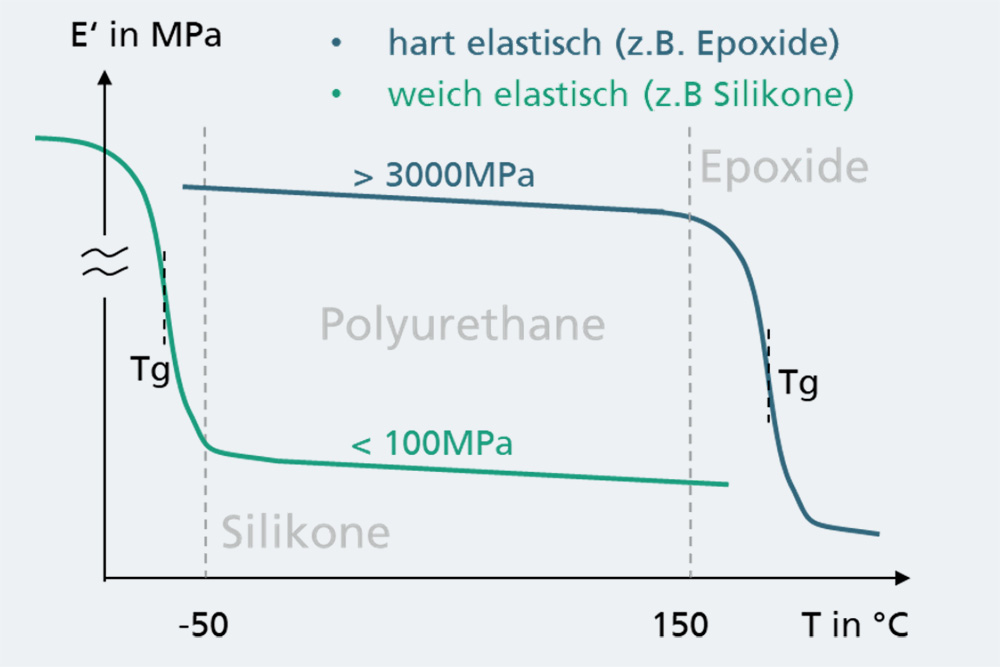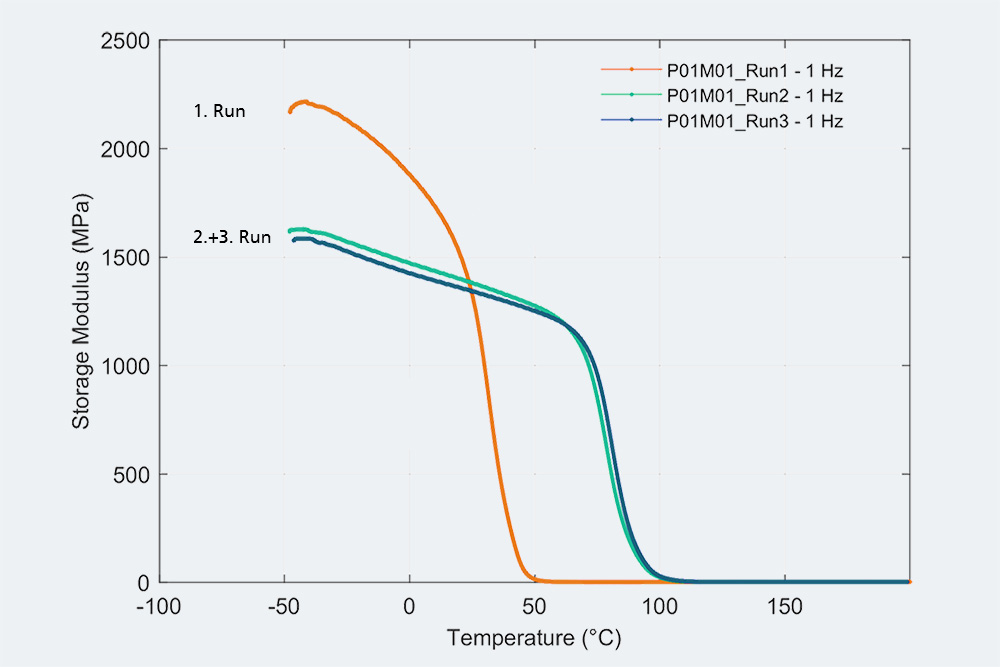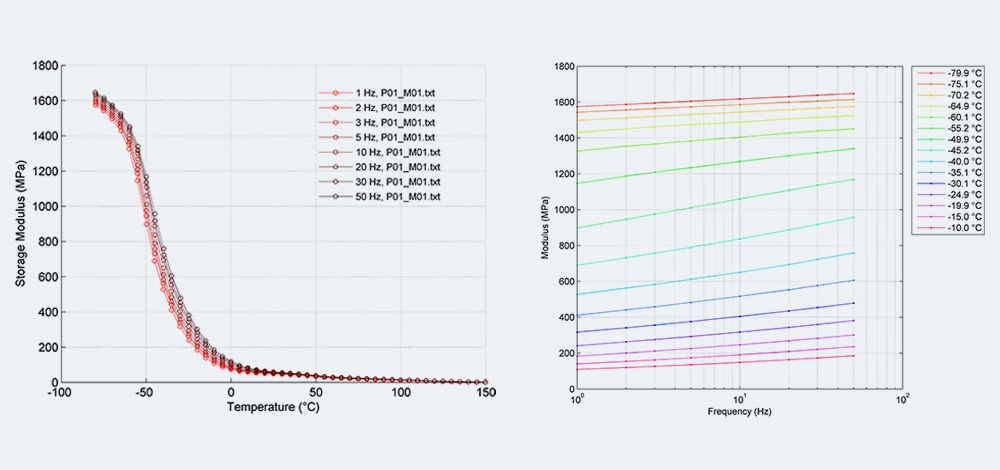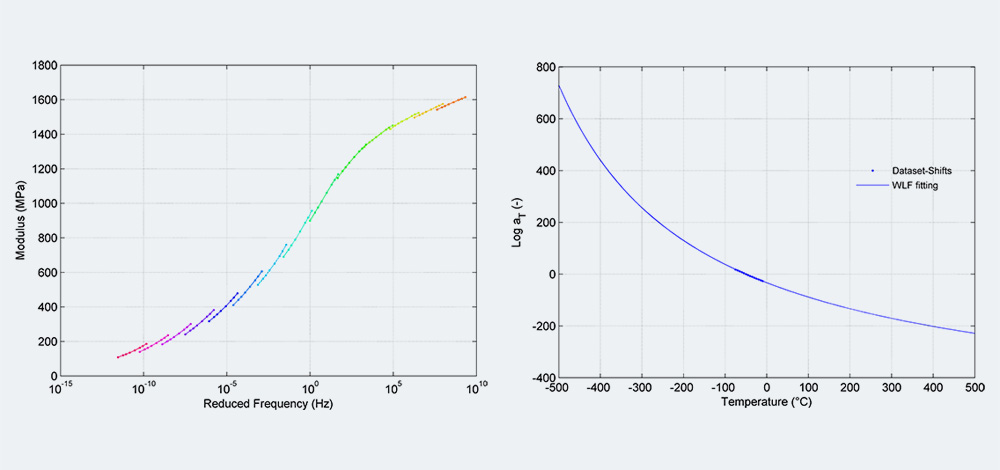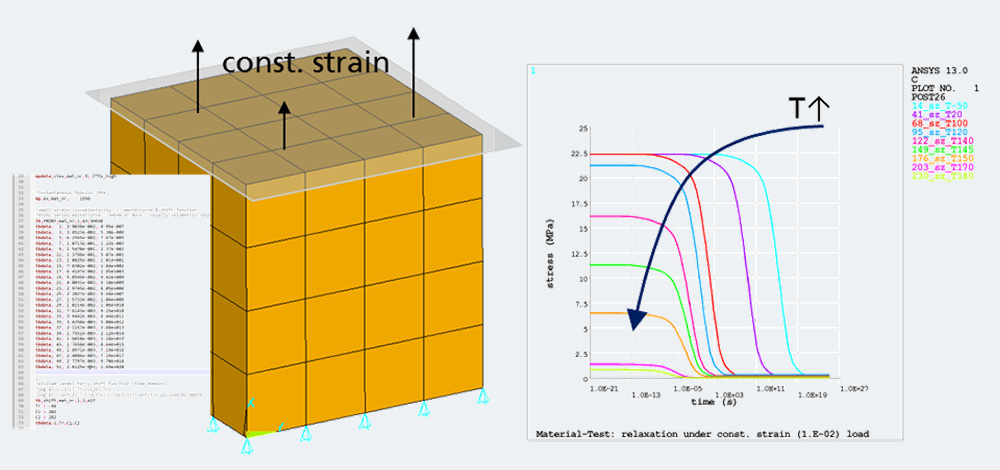Dynamic mechanical analysis (DMA) is essentially used to characterize the temperature and time-dependent stiffness and elasticity of polymer materials. These "viscoelastic" properties vary greatly depending on their chemical basis and various additives. DMA is used to reliably determine the storage modulus (modulus of elasticity of polymers) and the glass transition range.
Temperature and time-dependent elasticity data
Topic
Reiternavigation
Stiffness measurement
Selection support for polymer materials
- Identification of materials for the specific operating temperature range and with high resistance to ageing effects
- Characterization of aging effects due to temperature changes, humidity/heat, salt spray or media aging
- Measurement of the storage modulus and the glass transition area (Tg) as a function of temperature and frequency
- Load-dependent (tension/bending)
Materials modeling for FEM
Characterization procedure for modeling linear viscoelastic behavior
- Multiple measurement of at least three samples to minimize post-crosslinking processes
- Selection of the best sample for characterization
- Carrying out a time- and temperature-dependent storage modulus measurement (Prony measurement)
- Extraction of the necessary parameters for viscoelastic material model (generally valid)
- Data preparation for FEM structural simulation as ready-to-use micro (e.g., Ansys)
Plant specifications
System specification for dynamic mechanical analysis (DMA)
| Dynamic mechanical analysis (DMA) | |||||
|---|---|---|---|---|---|
| Device: | Q800 from TA Instruments | Displacement resolution: | 1 nm | Heating rate: | 0,1 to 10 K/min |
| Maximum force: | 18 N | Frequency range: | 0,01 bis 200 Hz | Cooling rate: | 0,1 to 10 K/min |
| Minimum force: | 0,0001 N | Deformation range: | ±0,5 µm to 10 mm | Temperature stability: | 0,1 K |
| Force resolution: | 0,00001 N | Temperature range: | -150 to 600 °C | ||
| DMA with humidity control module | |||||
|---|---|---|---|---|---|
| Temperature range: | 5 to 120 °C | Cooling rate: | 0,1 to 1 K/min | Humidity accuracy: | 5 to 90 % r. H. ± 5 % r. H. |
| Temperature accuracy: | ± 0,5 K | Humidity control: | 5 bis 95 % r. H. | Humidity control: | 2 % r. H./min |
| Heating rate: | 0,1 bis 1 K/min | ||||
| Loading options | ||||
|---|---|---|---|---|
| Tensile (film and fiber) | Tension in liquid medium | 3- or 4-point bending | cantilever | compression |
